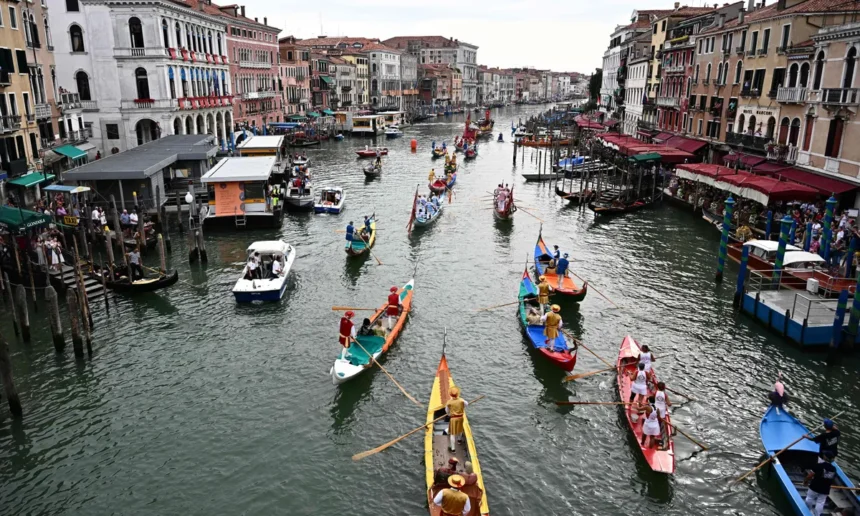Venice, Italy, known for its picturesque canals and historic charm, is set to implement a groundbreaking measure aimed at preserving its unique heritage. Starting from next April, the city will begin testing a daily admission fee and a cap on visitor access to its famous canals—a move hailed by the mayor as the world’s first of its kind.
The aim is to manage the flow of tourism on spring bank holidays and summer weekends when the visitor numbers are in huge demand said in a press conference on Thursday. Travellers will have to book their visit online and have to pay 5 euros to obtain a QR code at the entry point and then they will grant them access to the city’s historic quarters.
The restriction will be applicable from 08:30 to 16:00 local time and for the total of 29 days and the covers most weekends from April 25 to mid July next year. The restriction will not be applicable for the lagoon’s smaller islands Murano, famou for the glass-making industry. Local people of venice are free from paying and booking slot said the councillor Michele Zuin. Under 14 visitors will need to register but have a free access.
The new system is designed to strike a delicate balance between welcoming tourists and safeguarding the delicate ecosystem and infrastructure of Venice. With its iconic waterways often teeming with visitors, the city has faced challenges ranging from environmental degradation to the wear and tear on historic buildings.
The daily admission fee is expected to contribute to the maintenance and conservation of Venice’s cultural treasures, helping fund initiatives to repair and preserve the city’s architectural marvels. Additionally, the fee aims to discourage excessive tourism, promoting a more thoughtful and measured approach to experiencing this world-renowned destination.
The success of this experiment in managing visitor flow and generating revenue for conservation efforts may set a precedent for other popular tourist destinations facing similar issues. As cities around the world grapple with the dual demands of tourism and sustainability, Venice’s approach could inspire a paradigm shift in how destinations strike a balance between economic benefits and environmental protection.
Venice’s decision to implement a daily admission fee and a cap on visitor access stands as a bold and progressive move in the face of growing concerns over overtourism.






